It all started with Georgette’s pet monkey. Deep in the Democratic Republic of Congo (DRC) rainforest, in the remote village of Opala, a team of researchers noticed a little girl with a strange-looking monkey on a leash in 2007.
The girl, Georgette, told the scientists it was called ‘lesula,’ but no one had heard of it nor did the animal look like anything found in the DRC. They snapped a photo.
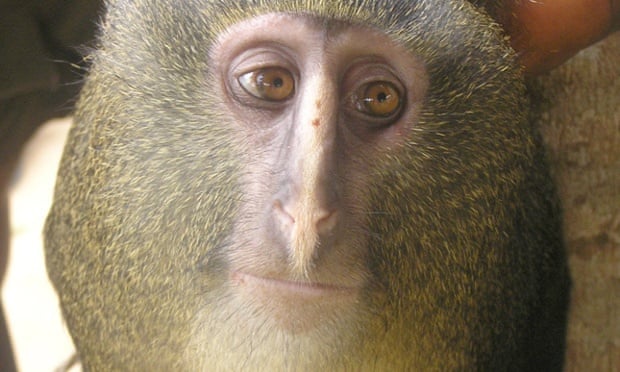
Five years – and tonnes of research – later, the world officially met Africa’s newest monkey via a paper published in the journal PLOS ONE. The news made headlines around the world, aided by a portrait so soulful the Guardian’s art critic compared it to a Rembrandt painting.
The media soon moved on – as it is apt to do – but that was really only the beginning of the story.
Half-way across the world in Florida, prospective student Steven McPhee, then a bartender with a penchant for solo globe-trotting, met with anthropology professor, Kate Detwiler at Florida Atlantic University.Georgette with her unusual pet, a juvenile lesula.
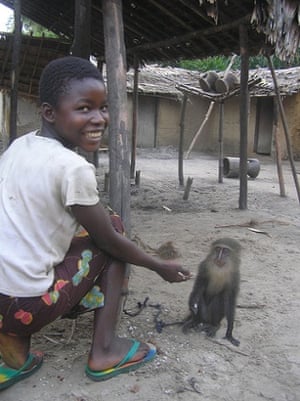
“I basically walk into her office and said, ‘Hi. My name is Steven. I have a degree in biology, extensive travel experience, and I want to study primates in the Congo,’” McPhee said.
Fortunately for him, Detwiler had started collaborating with the TL2 project, which was behind the discovery of the lesula (Cercopithecus lomamiensis). Run by the Lukuru Foundation, the TL2 Project is a conservation and research programme focusing on a vast area between three rivers in the Congo: the Tshuapa, the Lomami, and the Lualaba.
The project is headed by the indefatigable husband-and-wife team of John and Terese Hart, who have made Congo their home for 40 years. Their work not only resulted in the discovery of lesula but also in the creation of two regional parks protecting around half of the new species’ habitat, as well as bonobos, forest elephants, leopards, and thousands of other lesser-known species.
Detwiler, who had visited the Harts’ project and co-authored the paper, was on the look out for a student who would not only jump at the chance of studying the lesula, but could also handle the rigours of fieldwork in one of the world’s least-explored forests.
“I think we were both a little surprised that day,” McPhee said of his first meeting with Detwiler, “but the excitement was palatable, and by the end of the day Kate had already unofficially incorporated me into the project.”
My doughy, South Florida body quickly transformed. I lost 25 pounds to the jungle in three months. Steven McPhee
Researchers knew the very basics of lesula, whose name is both singular and plural like ‘sheep’ or ‘deer.’ It was clearly a guenon monkey (in the genus Cercopithecus), but distinguished by large eye sockets, distinct vocalisations, and some unusual behaviours.
Currently, there are 33 known species of guenon monkeys, making them the most species-rich of Africa’s mainland primates.
“They are colourful monkeys, and their evolution is linked to multiple waves of forest expansion and retreat during past climate changes in Africa’s equatorial forests,” Detwiler said, who did her PhD work on the family’s genetics. She compared their evolutionary radiations – or how species adapt to and fill ecological niches – to famous examples like Darwin’s finches in the Galapagos or the cichlids of East Africa’s lakes.
Still, many questions remained about the lesula, the most pressing of which was how the bushmeat trade was impacting the primate.
“Bushmeat hunting is rife throughout this ecosystem,” said McPhee. “When first surveying the area in 2007, John and Terese found large sections of this forest virtually emptied of all wildlife.”A camera trap catches a lesula surveying the forest.
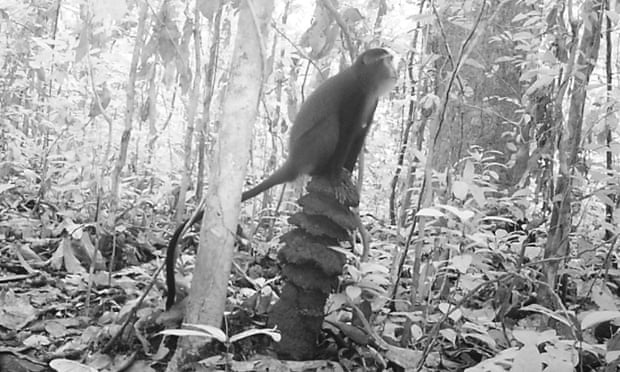
So, within 18 months of meeting Detwiler, McPhee was on the ground in the DRC to help determine the conservation status of the lesula. Although no stranger to traveling in far-off countries, McPhee described the journey as “gruelling”.
“It required a heart-stopping flight from Kinshasa to the regional capital of Kisangani, then 350km down a jarring, one-rut bicycle path on the back of a motorcycle. Once we reached the end of the footpath, we just kept going – trekking 13km into the jungle. All our supplies and equipment were carried in by hand,” he noted.
Working with a dozen Conoglese research assistants, McPhee set up remote camera traps to hopefully catch a glimpse of lesula. The team would use their data to determine how the continent’s newest primate was faring in a heavily-hunted forest.
“Our days were long, often trudging through swamp and rivers,” said McPhee. “My doughy, South Florida body quickly transformed. I lost 25 pounds to the jungle in three months. The hardest part was the social and emotional isolation. We were days away from the nearest phone or internet, and only the lead research assistant, Pablo Ayali, spoke any English, and it was pretty basic. I basically did not have a real conversation with another human for two months, but still, we managed to have some good laughs.”
The lesula proved so cryptic that despite spending more than two months in the jungle, McPhee never saw a wild individual. He did, however, get an up-close and personal look at a female pet lesula in a local village.
“She was absolutely beautiful,” he recalled. “I immediately began taking photos, vocal recordings, and collecting fecal samples, but I was very happy – my hands were shaking so bad I was having difficulty getting a clear photo.”
Even though McPhee never saw a wild lesula, the camera traps did.
“We were able to capture short video clips of lesula behaving naturally in the wild. Fortunately for us, as shy as lesula was in person, they were certainly not camera shy,” noted McPhee.
A mother and juvenile lesula caught on one of the camera traps set by McPhee and his team.
Surprisingly, the most common species caught on video was not the usual suspects – duikers and bushpigs – but lesula. McPhee and his team compared their findings with another camera trap survey in a non-hunted forest in Lomami national park, only to discover that the lesula appeared to be doing as well in the heavily-hunted forest as in the non-hunted one.
“This tells us that the lesula populations at both sites are comparable, and that the lesula are coping very well with [the bushmeat threat],” explained McPhee. “What we see is a very healthy lesula population with lots of females, juveniles of all ages, and even two infants. The videos of these infants were the first ones ever taken.”
But the survey also revealed much lower populations of wildlife popular with hunters. For example, bushpigs, which are usually abundant in protected forests, were only caught on the camera trap once.
“So while the situation is not great for species living in these heavily hunted zones surrounding the national park, it would seem that in the case of lesula, we’ve stumbled on one of the few ‘good news’ stories in primatology,” said McPhee.
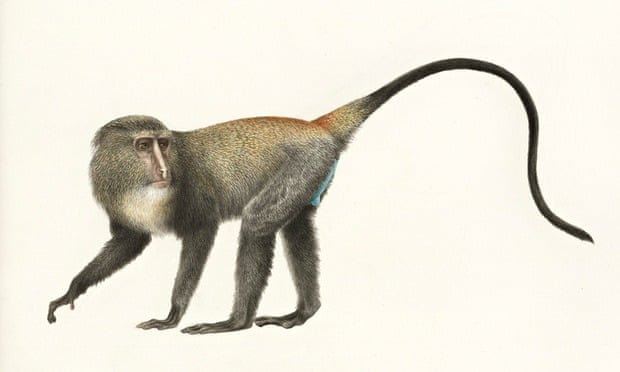
McPhee believes the lesula has avoided hunting pressure for the very same reason it avoided science for so long: its cryptic and shy nature.
John Hart, who helped oversee McPhee’s research, said that even though these findings are heartening, it doesn’t mean conservationists should be complacent about the lesula’s fate.
“Our discovery … came as surprise, but appears to be a robust conclusion,” he noted. “Still, we want to be able to confirm this at other sites.”
For example, Hart said he would not expect the lesula to fare so well in heavily-logged areas, since scientists believe the species is dependent on primary, untouched forest. Unlike many of the world’s tropical forests, the TL2 region has largely avoided industrial logging and mining to date. Also, while hunters may now be focused on animals like bushpigs and duikers, that could change if these animals are hunted out. The lesula could become the next target.
Indeed, Pablo Ayali, a local Conoglese botanist from the University of Kisangani who works with the TL2 program, said that lesula are threatened especially by hunting with poison-tipped arrows and snares set for other species. In 2013, Ayali and his team stumbled on a female lesula and her baby caught in a trap. They were able to save the pair and release them into the wild, but many may not be so lucky.
Hunter with monkey kill caught on camera trap in the TL2 region.
Hart, Detwiler, and their colleagues have recommended that the IUCN Red List categorise the lesula as vulnerable. Hart said the new findings wouldn’t change this recommendation, especially given the leusla’s small range of around 17,000km (an area just a little larger than Northern Ireland).
But the camera traps recorded more than just population data. In all, the team recorded more than 90 minutes of lesula footage – a full-length feature film – giving them insights into the new species’ behaviour like “like group size, diet, and activity patterns,” according to McPhee. For one thing, the camera traps definitively proved that the lesula was primarily – and oddly – a ground-dwelling monkey.
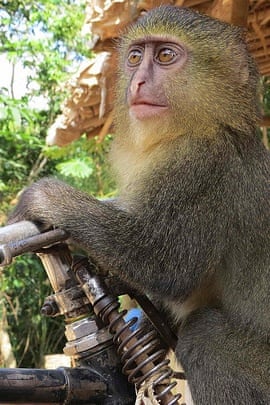
“Living and going about their daily life on the ground is a really unusual adaptation for this group of African monkeys,” said McPhee. “Almost all other closely related species spend their time in the high tree canopy. Lesula is fully capable of getting up there, but apparently, they are quite happy staying down on the ground. This means that they face different challenges than the other monkey species present in this part of the forest. Lesula has to interact with other terrestrial species, including predators, but the trade-off seems to be working out well for them.”
Today, Ayali, who assisted McPhee in 2013, is continuing the work by spearheading a new TL2 camera trap programme. He said camera traps have revolutionised how biologists monitor animals in the world’s second largest rainforest.
“[They] permit us to observe the diurnal, nocturnal, and discreet species difficult to [find through] direct observation like lesula, Congo peafowl, elephants and also dangerous species like leopard. The camera trap also permits [us] to discover new species and to confirm some species as golden cats, gigantic pangolin, ratel [or honey badger].”
McPhee’s work, which he is currently crafting into a master’s thesis, is not going unnoticed. Last August, the research won second place at a meeting of the International Primatological Society.
“This was quite a surprise as we put up a master’s thesis from a brand new primate lab with very little funding, and successfully competed with 11 PhD finalists from the best primatology programs in the world,” McPhee said.
Detwiler called the award a “great honour” for McPhee and her Primate Molecular and Behavioral Ecology Lab.
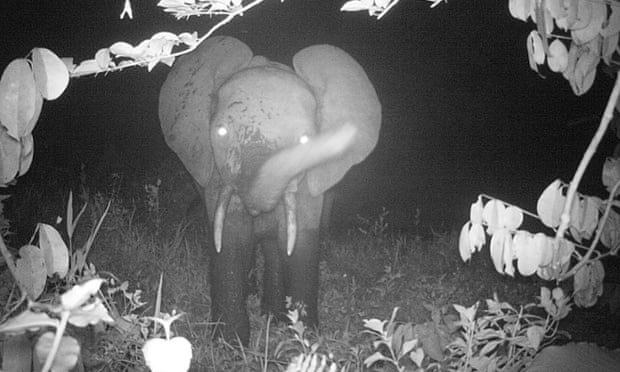
“The discovery of lesula highlights the TL2 Landscape as a significant forest region for the evolution and diversity of guenons, and suggests that there is more diversity yet to be discovered,” she said.
Detwiler is right: the Hart’s recently stumbled on another mystery monkey in the region. At first they thought it might be a new species, but now suspect it is actually the little-known Dryas monkey (Cercopithecus dryas), another guenon. This is important because the nearest record of a Dryas’ monkey is 400km to the west, meaning, if confirmed, the discovery would significantly expand the range of a primate considered critically endangered. With this new monkey, the TL2 region is now believed to be home to at least 15 primates, including an astounding eight guenons.
The Harts are striving toward having the TL2 region turned into a national park. Currently, the region is protected by two regional parks including close cooperation with local communities, but national park status would give it greater permanence, according to Terese Hart.A mystery primate from the TL2 region that was killed by a hunter for bushmeat. The Harts believe the animal may be a Dryas monkey.
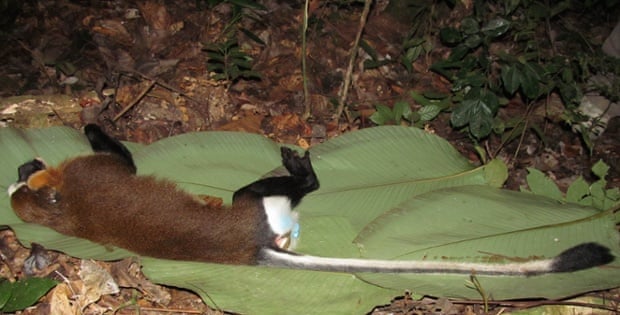
“That is why the work of the Lukuru Foundation is so vitally important,” said McPhee. “John and Terese [Hart] are engaging people from all levels, from the local village chiefs to the government officials of the DRC, to put in place protective measures for this forest. The foundation is also raising the next generation of conservationists by recruiting local Congolese to their team.”
There is no question, if not for the work of the Harts the TL2 region would remain largely forgotten – and the lesula still unknown to the wider world. But, perhaps most important, is the legacy the Harts are building by working hand-in-hand with local communities, scientists, and conservationists. After all, protection of this great forest – and its continuing mysteries – will depend on the decisions of the Congolese. For, even though the lesula was ‘new to science’ in 2007, local people have been familiar with it for thousands of years.
“I actually got to talk to a lot of the local people and village chiefs … I was struck by how proud they are of lesula,” McPhee said. “They now know that this species is found only there, and are happy that the world is interested in what is going on in their backyard.”
Lesula group on video camera trap.
This article was first published by The Guardian on 13 Mar 2015.
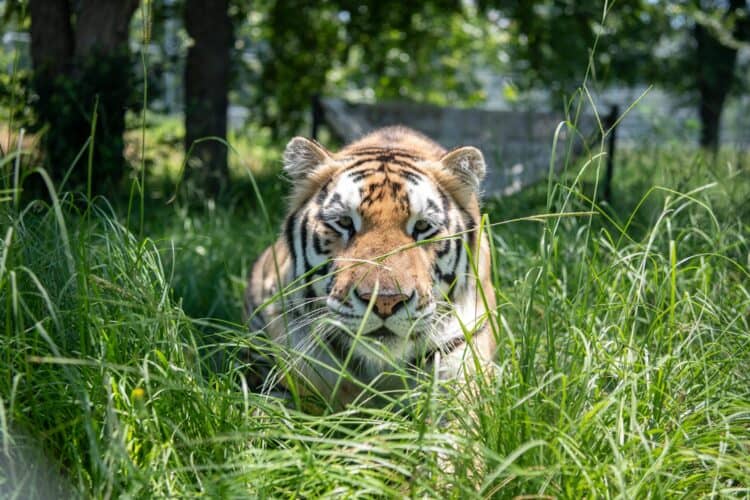
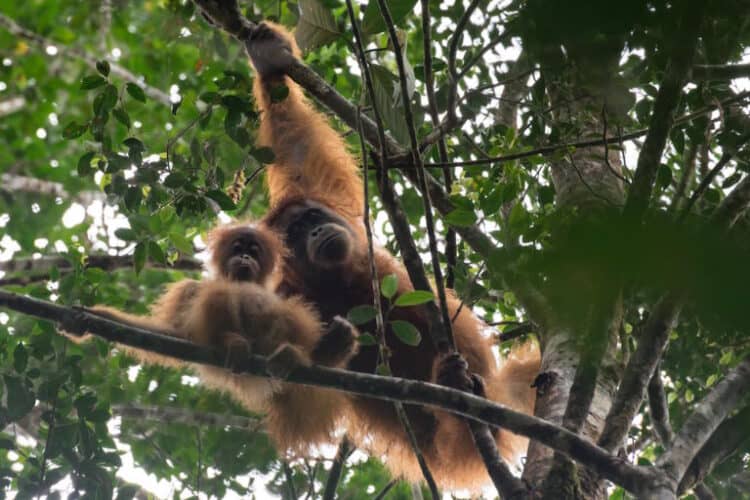
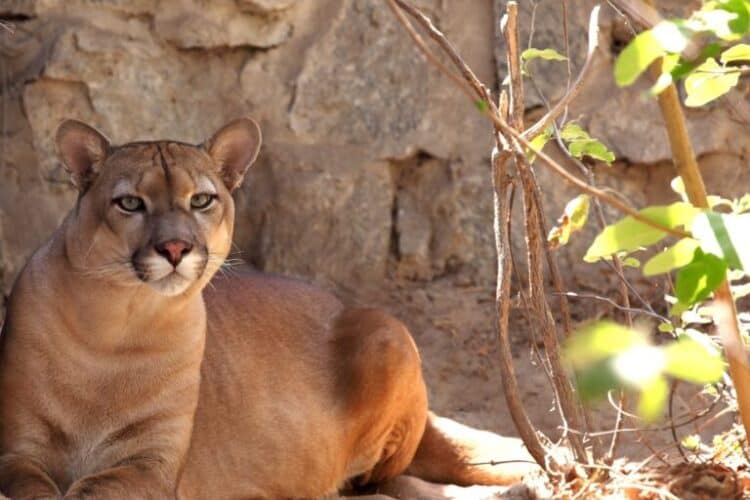
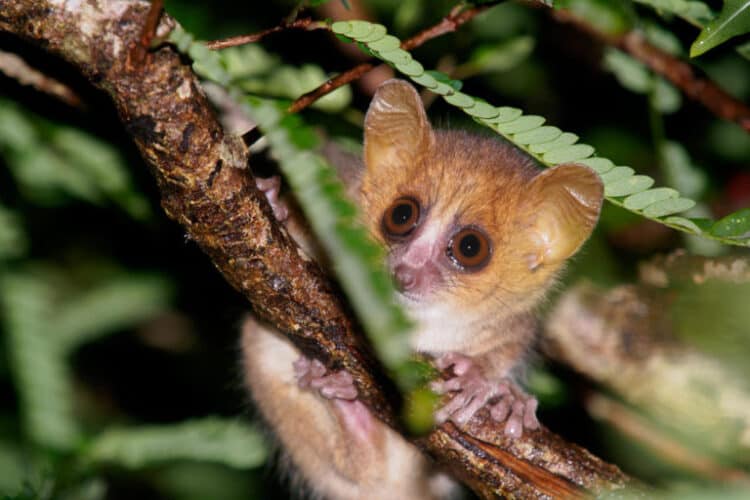
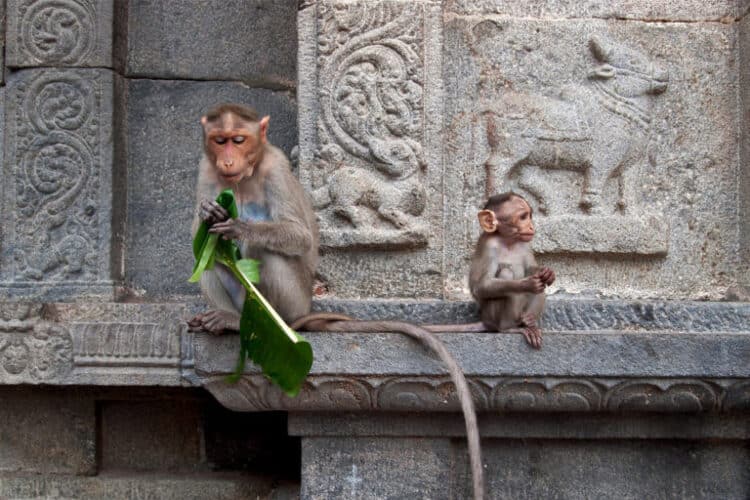
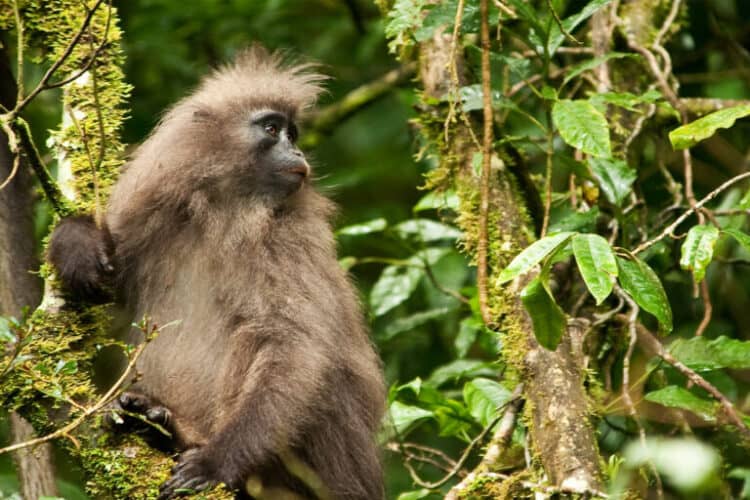
Leave a Reply